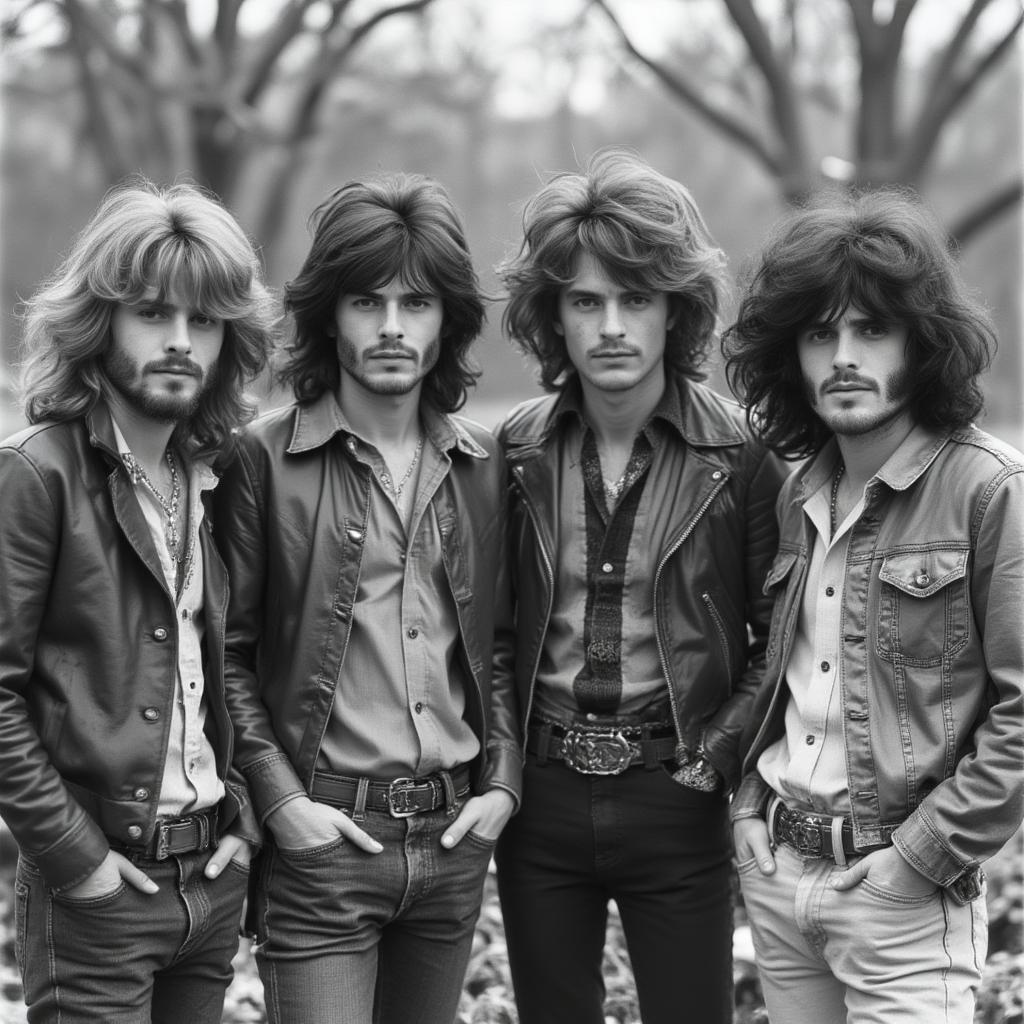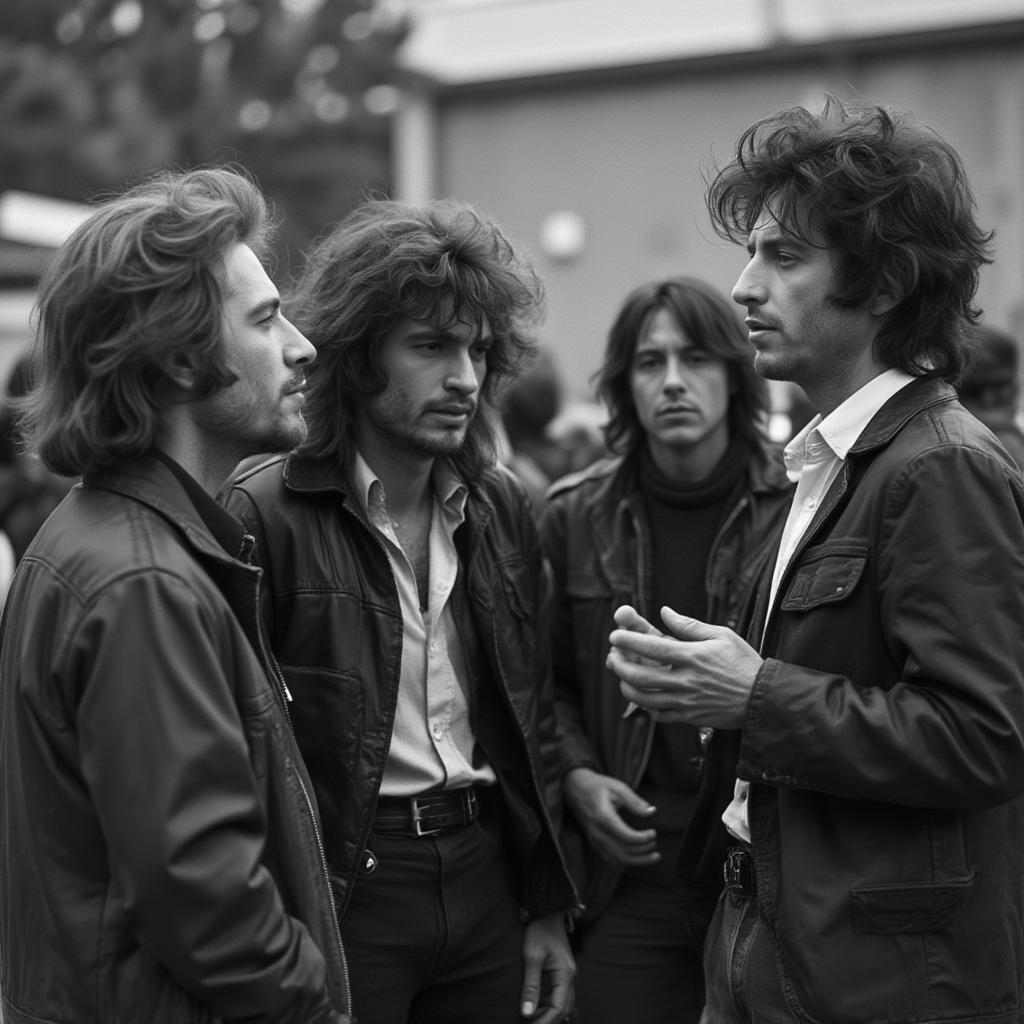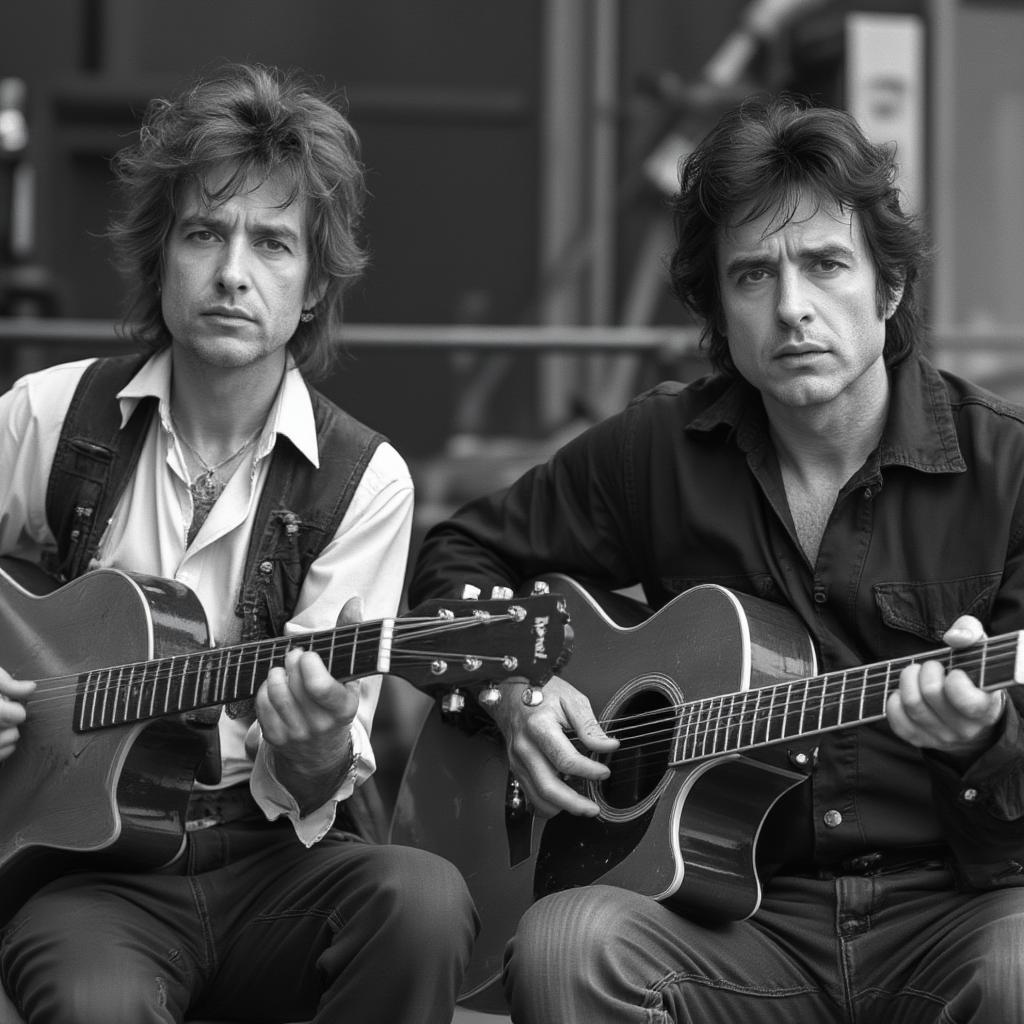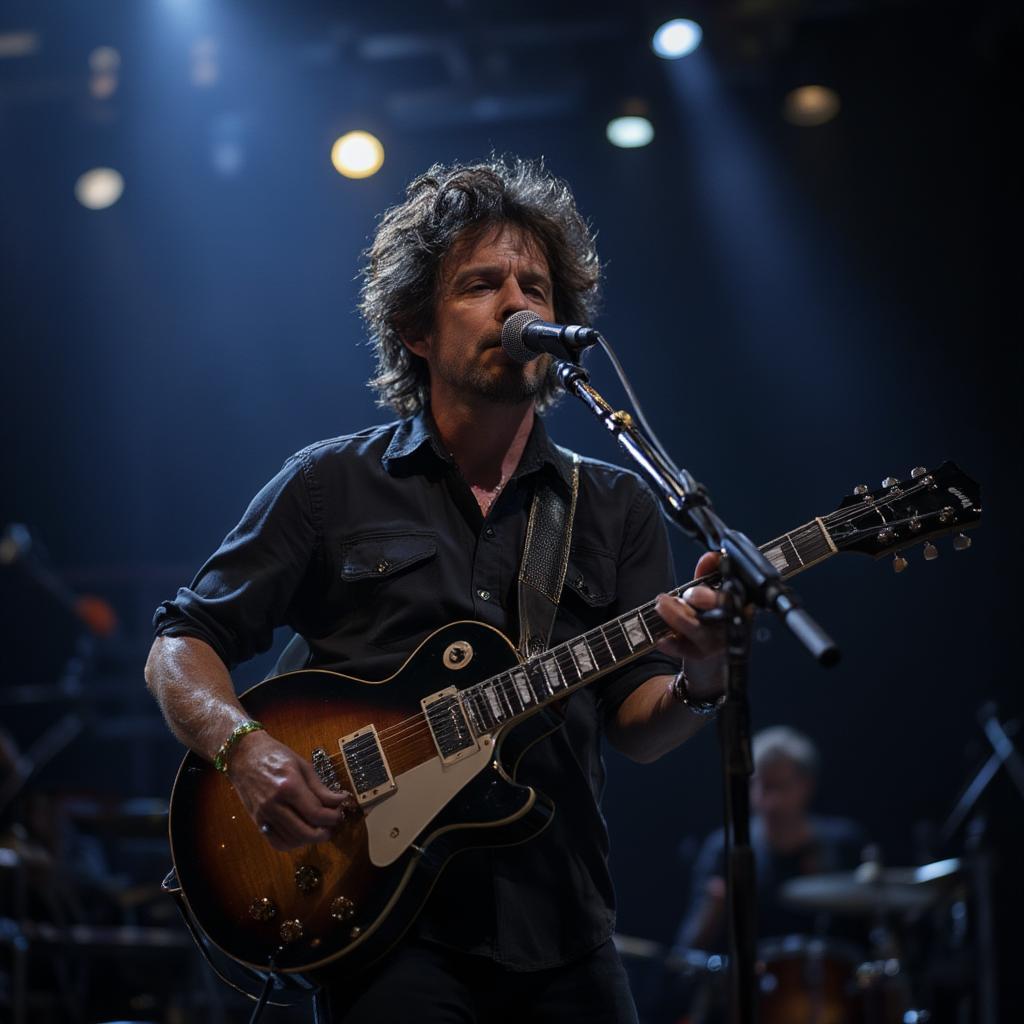Bob Dylan and The Byrds: A Folk-Rock Collision That Changed Music

The collision of Bob Dylan and The Byrds is more than just a footnote in music history; it’s a seismic event that reshaped the landscape of folk and rock. When The Byrds took Dylan’s acoustic masterpieces and plugged them in, they didn’t just create a new sound; they ignited a cultural revolution. It wasn’t just about amplification; it was about interpreting, reimagining, and making these deeply personal songs accessible to the masses.
Before we dive deep, let’s not forget what those early days felt like, the raw power of folk music meeting the electric energy of rock ‘n’ roll. It’s a story of innovation, influence, and the sometimes-turbulent relationship between an artist and the interpretations of his work. Like, did they really get what I was trying to say? That’s what we’re going to unravel here.
The Folk Roots of Bob Dylan
Before The Byrds came along, Bob Dylan was carving his name in the heart of the folk movement. He was a voice for a generation, strumming his acoustic guitar and delivering lyrics that were both poetic and politically charged. Songs like “Blowin’ in the Wind” and “The Times They Are a-Changin’” became anthems, not just of folk music, but of social change itself. He wasn’t just singing songs; he was telling stories that resonated with a generation that was questioning the status quo. You understand? This wasn’t just entertainment; it was a conversation, and it was getting people to think.
Dylan’s Unique Songwriting Style
What made Dylan so compelling was his unique way with words. He wasn’t afraid to be ambiguous, to use metaphors and allusions that forced the listener to dig deeper. His voice, though sometimes described as rough or untrained, was undeniably authentic, filled with a sincerity that cut through the noise of commercial music. He was painting pictures with his lyrics, and these pictures were vivid and unforgettable.
And those early songs, they were raw, they were honest, they were real. You could feel the dust on the road, the chill in the air, the longing in his heart. He didn’t need fancy production, just his voice, his guitar, and the words that flowed from his soul.
The Byrds’ Electric Transformation
Then came The Byrds, a band from Los Angeles that was looking for a new sound. They took notice of what Dylan was doing with folk music, but they saw it through a different lens, a lens that was tinted with the electric colors of rock ‘n’ roll. They weren’t trying to imitate Dylan; they were trying to translate him, to make his songs resonate with a wider audience. They were looking to bring folk into the modern era.
“Mr. Tambourine Man”: The Sound That Changed Everything
Their breakthrough came with “Mr. Tambourine Man,” a Dylan song they transformed into a jangly, shimmering folk-rock masterpiece. The electric 12-string guitar, the harmonies, the driving beat – it was a revelation. It wasn’t just a cover; it was a reinvention, a testament to the power of musical interpretation. This wasn’t just folk, and it wasn’t just rock. It was something new, something that grabbed you and made you pay attention.
“The Byrds’ version of ‘Mr. Tambourine Man’ was like a lightning bolt, it took folk music and electrified it. It showed what was possible when different genres are allowed to converse.” – Dr. Eleanor Vance, Musicologist and Cultural Historian
The track topped the charts, introducing a new generation to Dylan’s songwriting while also establishing The Byrds as pioneers of folk-rock. It opened the floodgates for other artists to explore this new fusion, forever changing the direction of popular music. You can hear it echo through the decades.
The Impact and Influence
The collaboration, whether directly or indirectly, between Bob Dylan and The Byrds wasn’t just a one-off phenomenon. It was a catalyst that forever altered the course of popular music. It paved the way for countless other artists to experiment with combining folk sensibilities with rock instrumentation.
The Birth of Folk-Rock
The Bob Dylan and The Byrds pairing essentially birthed folk-rock as a genre, with its distinct sound defined by jangly electric guitars, harmonies, and lyrics that often carried social or political weight. Think of groups like The Turtles, Simon & Garfunkel, and even Crosby, Stills & Nash – all owe a debt to that moment when folk met electric.

The influence of their sound extended beyond the ’60s, continuing to inspire artists across genres. It wasn’t just a sound, it was an attitude, a way of blending authenticity with innovation. It’s that kind of cross-pollination that keeps music alive.
A Complex Relationship
However, not all of the impact was smooth sailing. The relationship between Dylan and The Byrds was, at times, complex. Some critics argued that The Byrds’ versions of Dylan’s songs lacked the raw intensity and emotional depth of the originals. Dylan himself, with his own ever-evolving artistic vision, had mixed feelings about seeing his work interpreted through another band’s lens. It was a clash of perspectives, but one that ultimately pushed the boundaries of musical expression. This is where songs written by bob dylan for other artists become very relevant.
“The relationship between Dylan and The Byrds was a fascinating study in how interpretation can both elevate and challenge original works. It highlights the dynamism between artist, audience, and those who bridge the two.” – Professor Arthur Davies, Cultural Studies Expert
How Did The Byrds Change Dylan’s Songs?
The Byrds didn’t just play Dylan’s songs; they transformed them. They took his acoustic-driven, folk ballads and imbued them with an electric energy, a rock ‘n’ roll edge. How did they do it? It wasn’t about just plugging in electric instruments; it was about the arrangements, the vocal harmonies, the overall vibe.
They brought a layered instrumentation, with Roger McGuinn’s signature jangly 12-string Rickenbacker guitar at the forefront, while the vocals were often harmonized, making the songs more accessible and radio-friendly. It was a sonic change that took the intimate nature of folk and projected it outward, to a larger audience. It’s worth exploring how bob dylan written songs for other artists evolved over the years.
What Were Some Other Dylan Songs Covered by The Byrds?
Beyond “Mr. Tambourine Man,” The Byrds also tackled several other Dylan classics. They put their own spin on tracks like “All I Really Want to Do,” “Chimes of Freedom,” and “My Back Pages,” showcasing their ability to reinterpret Dylan’s music while still retaining its essence.
Each song they covered was like a new experiment, exploring the possibilities of this folk-rock fusion. They were trying different arrangements, different rhythms, different vocal approaches. It was all part of the creative process, searching for that perfect sound. This experimental spirit is also apparent in bob dylan bringing it all back home.
Dylan’s Response and the Evolving Music Scene
As the folk-rock scene took off, Bob Dylan wasn’t one to stay static. He himself started to embrace electric instrumentation, moving away from his purely acoustic roots. While there’s a myth he was directly influenced by The Byrds, Dylan’s move towards electric was more about his own artistic evolution, a desire to move beyond the boundaries of the folk scene, exploring new sonic possibilities.
It’s interesting to note how the times changed everything. What was once shocking was now seen as the next step in an artist’s natural progression. He was an artist of constant change, never content to stay in one place. And the story of bob dylan and the band underscores this fact.
The Electric Turn of Dylan
Dylan’s electric turn was both praised and criticized. Some purists felt that he was selling out, abandoning the roots of folk. Others saw it as a bold and necessary move, an expression of creative freedom. It’s a debate that continues to this day, testament to the lasting impact of his artistic decisions.
This also paved the way for bob dylan’s 30th anniversary concert in 1992, which brought together a huge number of artists to celebrate his music. The sheer scale of the event shows his tremendous importance in music history.
How Did the Folk Audience React?
The reaction from the folk audience to Dylan’s shift was a mixed bag. Some fans felt betrayed, seeing the electric instruments as a betrayal of the movement’s principles. The infamous moment at the Newport Folk Festival, where he was booed for performing with an electric band, remains a powerful example of this conflict.
However, many others embraced this change, seeing it as a way for folk music to reach a broader audience. It was a time of great debate, but it also highlighted the power of music to provoke conversation and challenge preconceptions. It was a turning point, a moment when music changed forever.
The Legacy and Lasting Impact
The fusion of Bob Dylan and The Byrds, whether direct or indirect, left an indelible mark on the world of music. They proved that genres can be fluid, that innovation can stem from interpretation, and that music has the power to transcend boundaries. The echoes of that folk-rock revolution can still be heard today.

Why Does This Collaboration Still Matter?
Their collaboration continues to matter because it reminds us of the importance of experimentation, of pushing the boundaries of what is considered possible. It’s a story of how artists can inspire each other, how different perspectives can lead to unexpected breakthroughs. It’s a testament to the power of music to change, to evolve, to adapt to the times.
What Can We Learn From Dylan and the Byrds?
We can learn that music is a conversation, a dialogue between artists and audiences, between the past and the present. We learn that artistic expression knows no limits, that the most profound transformations often come from unexpected places. Their story is about the clash of styles, the fusion of ideas, and the lasting impact of a single musical moment.
In conclusion, the story of Bob Dylan and The Byrds is a vibrant tapestry woven with threads of folk, rock, innovation, and interpretation. They did more than just create music; they created a cultural phenomenon, an echo that continues to reverberate through the corridors of time, reminding us that music has the power to change the world, one song, one interpretation, at a time.




